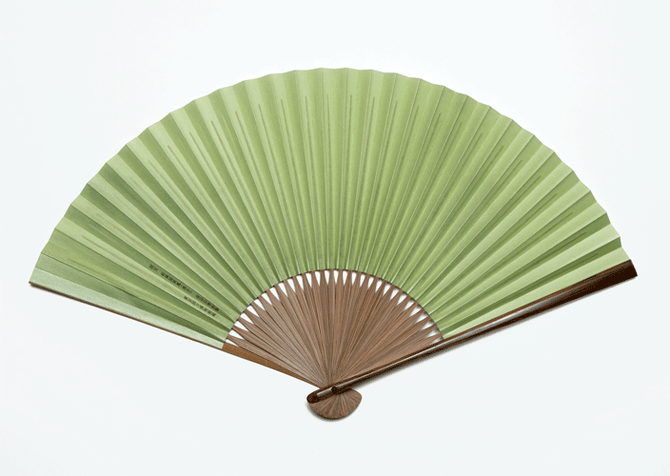BENRIDO
Traditional Folding Fan THE PINE TREES

Traditional Folding Fan THE PINE TREES
Description
◆<Shorin-zu byobu> Hasegawa Tohaku ◆
Hasegawa Tohaku, Azuchi-Momoyama period, Tokyo National Museum collectionThis is originally a Japanese folding screen: The Pine Trees (松林図 屏風, Shōrin-zu byōbu) by the Japanese artist Hasegawa Tōhaku, founder of the Hasegawa school of Japanese art. The precise date for the screens is not known, but they were clearly made in the late 16th century, in the Momoyama period, around 1595. The screens are held by the Tokyo National Museum, and were designated as a National Treasure of Japan in 1952.
The ink-on-paper work depicts a view of Japanese pine trees in the mist, with parts of the trees visible and parts obscured, illustrating the Zen Buddhist concept of ma (間) and evoking the Japanese wabi (侘) aesthetic of rustic simplicity. They are said to be the first paintings of their scale to depict only trees as subject matter, although a white shape to the upper right of the left panel might suggest a background mountain peak.
The Benrido Atelier is a COLLOTYPE workshop based in Kyoto, Japan and has mastered the art style since 1887. Their beautiful designs make for amazing Japanese gifts, decorations and souvenirs. The printing requires the best materials, with quality ink and handmade Japanese washi paper, and experienced craftsmen are the only ones able to properly design the prints - Each individual step requires experience and eye for detail to create beautiful tones and to properly balance the pigment.
Hasegawa Tohaku
Born in Nanao Noto (Ishikawa Prefecture) from Tenbun 8 to Keicho 15 (1539 to 1610). He is the ancestor of the Hasegawa school. At first, he mainly produced Buddhist paintings, but later went to Kyoto and devoted himself to Sesshu. He studied Song dynasty painting and Muqi style, and opened his own paintings centered on ink painting. His representative works are "National Treasure Shorin-zu byobu", "Dead Tree Monkey Figure", and "Chishakuin Gold Blue Painting".
Customers Also Viewed

Worldwide Shipping!

150 Years History!

8000+ Curated Items!

3000+ Reviews
PRE-SALES
If you have any questions before making a purchase chat with our online operators to get more information.
Ask An Expert or find our Questions & Answers

















